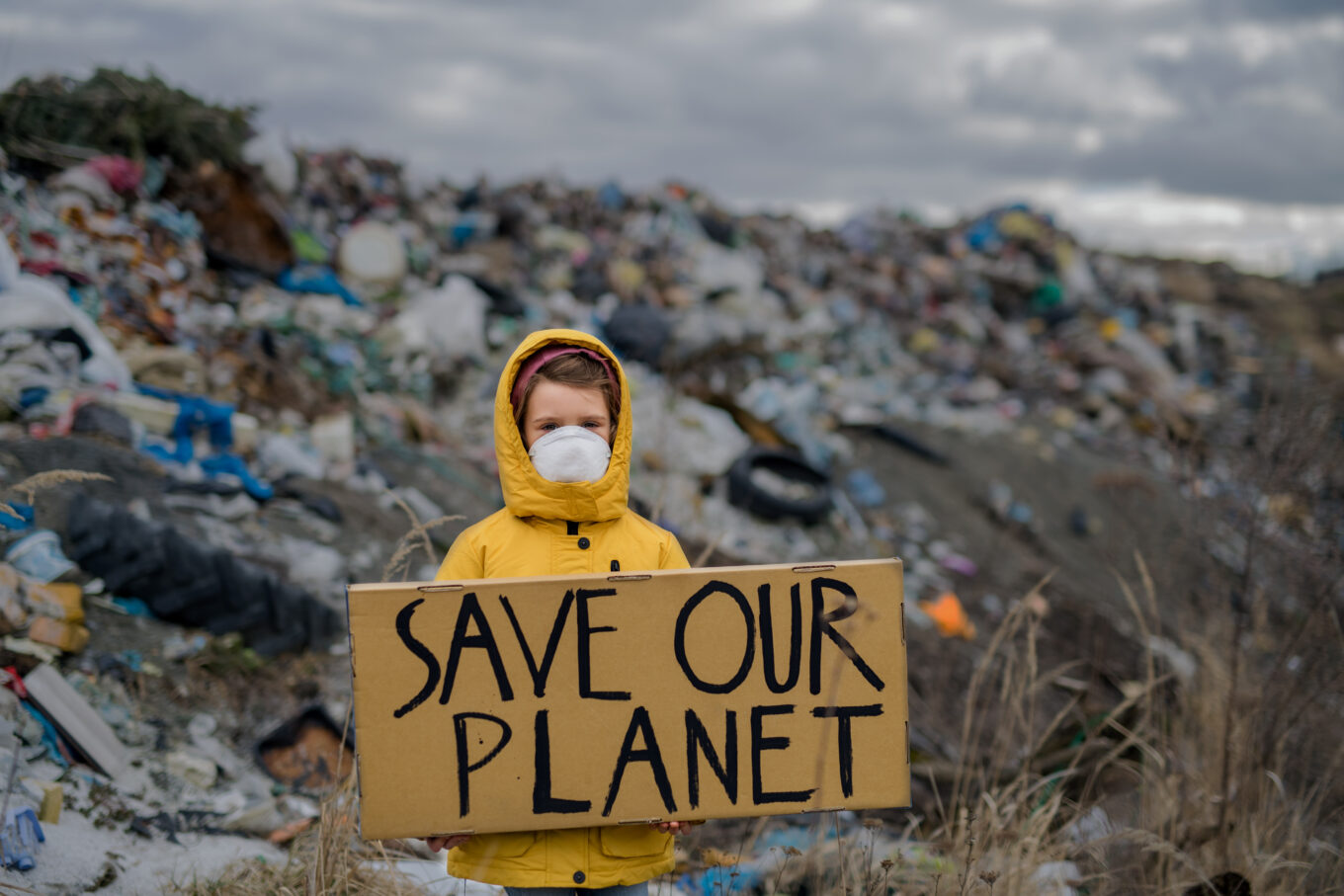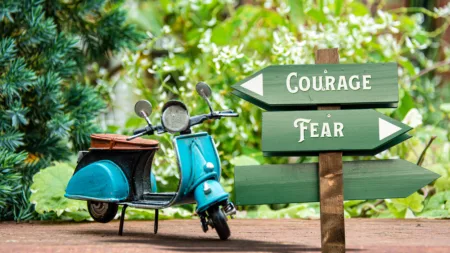Glen Hills Middle School in eastern Wisconsin seems like any other educational institution when you walk through its doors. The halls are filled with energy, classrooms buzzing with conversation and the occasional phone, and students trying to solve climate change.
Five students from the school, Julianna Franklin, Layla Caples, Taylor Abbot, Nyla Deans and Maddy Cook, are using a unique model to look at how practical solutions could change the trajectory of climate change for the planet. These ladies worked together to envision what a waste-free city might look like as a team for the Future City regional competition.
They named their model Greendale City. Their vision has this population center floating on top of the Great Pacific Garbage Patch. [[1]]
The City Would Suck Up Trash to Create Energy
One of the students on the project is Nyla Deans. “We have wooden floorboards here where citizens can put in their house and walk across them, and it’ll generate electricity,” she told WTMJ in a recent interview. [[2]]
The creative process showed the students how important their ideas could be on a planetary scale. You don’t need to be an adult to create something that can change the world. Even in seventh or eighth grade, it’s possible to impact society positively.
Lalitha Murali is the teacher supporting the five ladies on their Greendale City project. The Society of Science gifted her a grant to help the ground compete at the national level for the Future City competition if they reach that level.
For now, everyone is counting on votes from the public to reach that stage.
“Students need to understand that even a single action impacts our society,” said Murali.
How Do We Find a Place Where We Can Mend a Broken World?
According to the description of the project, Greendale City was built as an idea to mend a broken world that neglected the environment.
As part of the idea, the ladies suggest that smart fabrics from the ocean and eco-blocks can work with their electricity generation idea to create a sustainable population center.
“Our city thrives with reduced congestion, waste elimination, lower costs, and higher economic productivity because of a circular economy. It is a waste-free city that thrives with futuristic innovations and a healthy lifestyle.”
The Future City competition began in 2006. It used to be based in the United States, but it has become an international event for kids in the sixth, seventh, and eighth grades.
Any student in those grades can participate in the competition. Even homeschooled kids or those attending a private institution instead of public schools are invited to contribute their ideas to this competition.
The Future City competition is an example of how learning with STEM (science, technology, engineering, and math) and computer simulations can advance student learning today. [[3]]
After creating the first draft on a computer, the students transition to a three-dimensional model to bring their city of tomorrow to life.
Winners of the Future City regional competition, including the Glen Hills Middle School ladies who won the Wisconsin region, advance to the finals. First place receives a trip to Space Camp and a $7,500 award.
Second place winners receive $5,000, while third place gets $2,000.
The competitions have had several themes over the years. From fuel cells to urban disasters, students have come up with unique ideas that often shift how experts perceive different problems over the past decade.
For the 2021-22 competition year, the theme was “A Waste-Free Future.”
Why Choose the Great Pacific Garbage Patch?

The Great Pacific Garbage Patch is the largest of five plastic accumulation zones found in the world’s oceans. It is located approximately halfway between California and Hawaii.
Up to 2.5 million tons of unwanted plastic materials enter the ocean each year from the planet’s rivers. Over 50% of this material is less dense than the water, which means it won’t sink once it encounters the sea.
Buoyant plastics show resiliency within marine environments. That feature allows them to be transported over an extended distance. As they traverse the converging currents, they’ll eventually make it to this patch.
Experts believe the estimated surface area of this plastic garbage covers more than 1.6 million square kilometers. That makes it about three times the size of France or twice as large as Texas.
Every little bit counts! If you’d like to help these students reach their goals, you can vote at the Future City competition website. You’ll need to supply your name and a valid email address to cast a ballot. [[5]]
[[1]] https://theoceancleanup.com/great-pacific-garbage-patch/; [[2]] https://www.tmj4.com/news/local-news/how-5-glendale-middle-schoolers-are-tackling-solutions-to-climate-change ; [[3]] https://futurecity.org/about ; [[4]] https://doi.org/10.1038/s41598-018-22939-w ; [[5]] https://vote.futurecity.org/regional_winners/greendale-city/













Comments are closed.